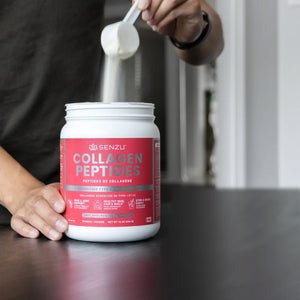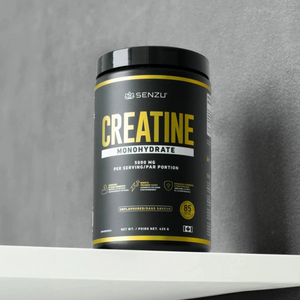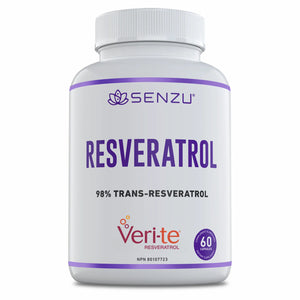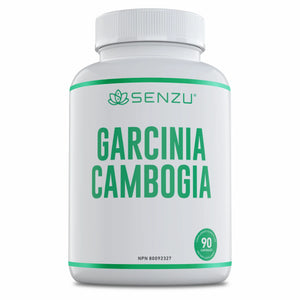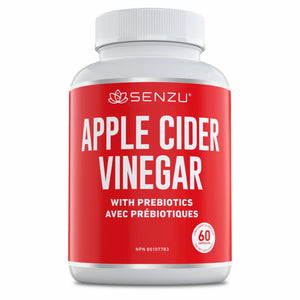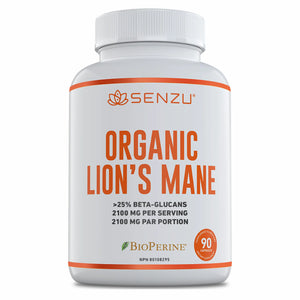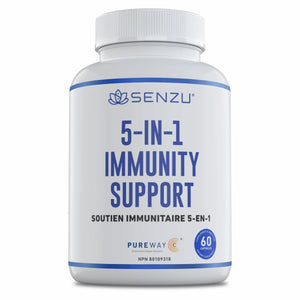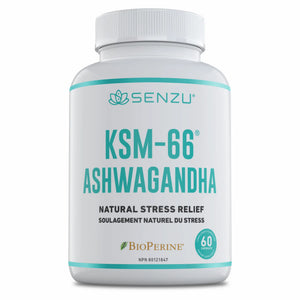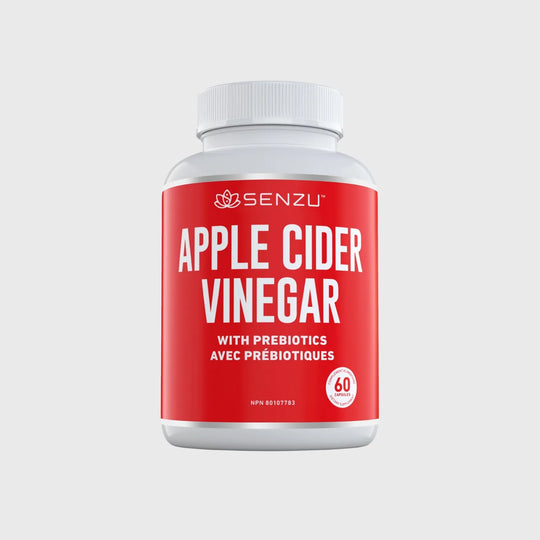Everything You Need to Know About Japanese Knotweed and Resveratrol
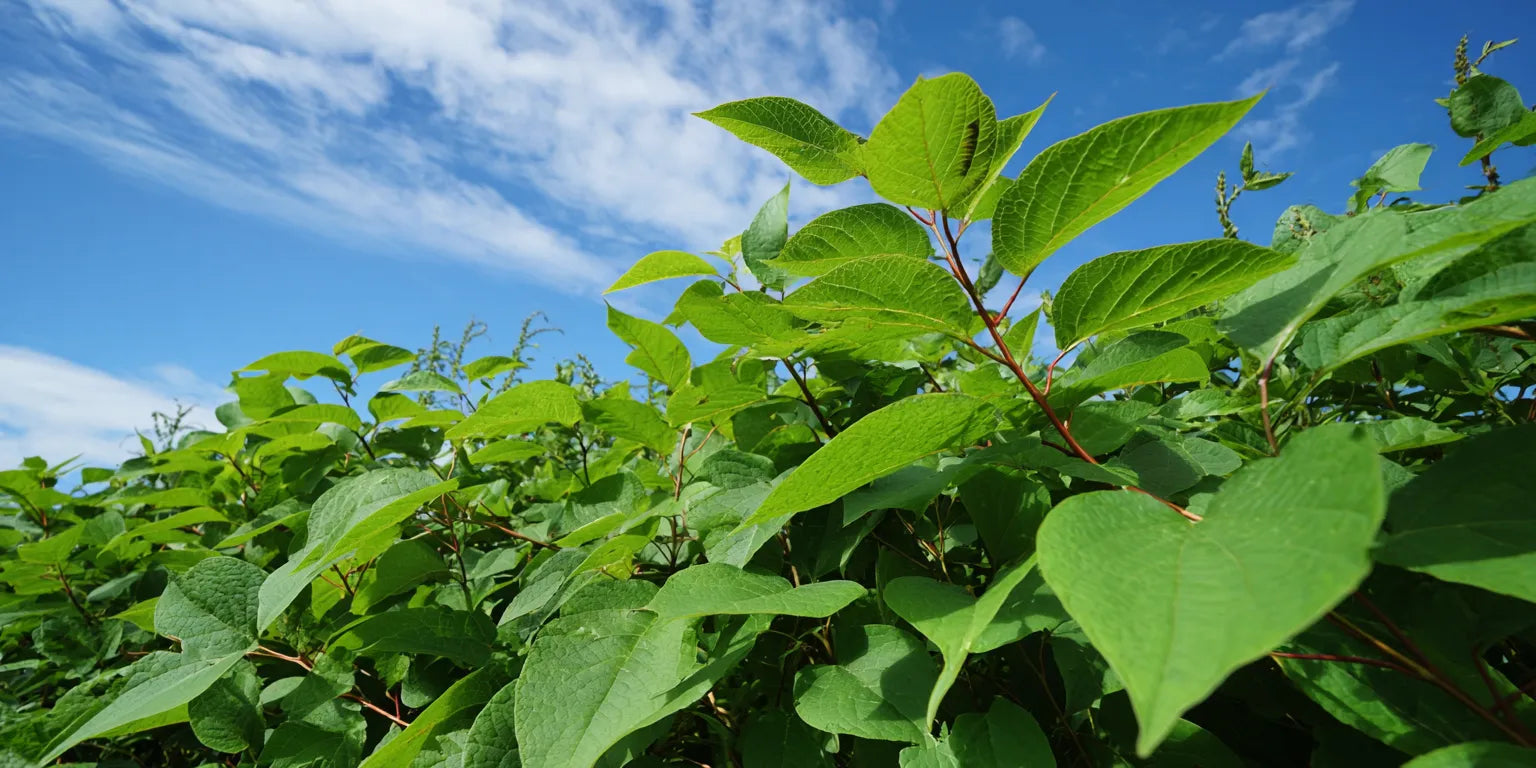
If you've been researching resveratrol supplements, you've probably noticed that most products don't clearly advertise their source. There's a reason for that. The uncomfortable truth is that the vast majority of resveratrol supplements on the market—some estimates suggest up to 90%—are derived from a plant called Japanese knotweed.
But what exactly is Japanese knotweed, and why should you care where your resveratrol comes from? In this comprehensive guide, we're diving deep into the relationship between this controversial plant and one of the wellness world's most popular supplements.
What Is Japanese Knotweed?

Japanese knotweed (Polygonum cuspidatum, also known as Fallopia japonica) is a large, herbaceous perennial plant native to East Asia, particularly Japan, China, and Korea. In traditional Chinese medicine, it's known as "Hu Zhang" and has been used for centuries for various purposes.
Physical Characteristics
Japanese knotweed is a distinctive plant that's easy to identify:
-
Grows 3-10 feet tall (sometimes up to 13 feet)
-
Hollow bamboo-like stems with purple speckles
-
Large, heart-shaped leaves (3-6 inches long)
-
Small, creamy-white flowers that bloom in late summer
-
Extensive underground root system (rhizomes) that can extend 20+ feet
Growth Habits: Nature's Unstoppable Force
What makes Japanese knotweed particularly notable—and problematic—is its aggressive growth pattern:
Rapid Growth: Can grow up to 4 inches per day during peak season
Extreme Resilience: Survives drought, flooding, and temperature extremes
Destructive Power: Roots can penetrate concrete, asphalt, building foundations, and flood defenses
Nearly Impossible to Eradicate: A tiny fragment of root (as small as 0.7 grams) can generate a new plant
Extensive Spread: Underground rhizomes create vast networks, with a single plant colonizing large areas
The Invasion Problem
Japanese knotweed was introduced to Europe and North America in the 19th century as an ornamental garden plant. It quickly escaped cultivation and is now considered one of the world's most invasive species.
Impact on ecosystems:
-
Outcompetes native plants for resources
-
Creates dense monocultures that reduce biodiversity
-
Damages riverbanks and increases erosion
-
Provides little value to native wildlife
-
Alters soil chemistry and composition
Impact on property:
-
Can cause structural damage to buildings
-
Grows through cracks in foundations and pavement
-
Reduces property values (up to 10% or more)
-
Makes properties difficult to sell or mortgage
-
Expensive to remove (can cost thousands of dollars)
In many jurisdictions, Japanese knotweed is:
-
Illegal to plant or allow to spread
-
Subject to mandatory removal orders
-
Regulated as a noxious weed
-
Grounds for legal action between neighbors
Japanese Knotweed and Resveratrol: The Connection
So how did this invasive plant become the primary source for resveratrol supplements?
High Resveratrol Content

Japanese knotweed roots contain significant concentrations of resveratrol—typically 3-5% by dry weight, sometimes higher. This is considerably more than most other natural sources, making it an attractive option for supplement manufacturers looking for concentrated resveratrol.
Economic Factors
The supplement industry's embrace of Japanese knotweed is primarily driven by economics:
Low Cost: Because it's an invasive species growing wild in many areas, raw material is extremely cheap or even free
Abundant Supply: The plant's invasive nature ensures a virtually unlimited supply
Established Extraction Methods: Decades of use have refined extraction processes
High Profit Margins: Low ingredient cost means higher profits for manufacturers
Traditional Use
Japanese knotweed has a long history in traditional Chinese medicine, where the dried root (Hu Zhang) has been used for various purposes. This traditional use provided a foundation for modern supplement applications, though traditional preparations differ significantly from concentrated extracts.
The Problems with Japanese Knotweed as a Supplement Source
While Japanese knotweed's high resveratrol content and low cost make it attractive to manufacturers, there are significant concerns for consumers.
1. Uncontrolled Growing Conditions
Unlike agricultural crops grown in managed environments, Japanese knotweed grows wild in uncontrolled locations.
Common growing locations:
-
Roadsides and highway margins
-
Vacant lots and disturbed land
-
Former industrial sites
-
Railroad tracks and rights-of-way
-
Riverbanks and waterways
-
Urban and suburban areas
Environmental exposure concerns:
These locations expose plants to:
-
Vehicle emissions and exhaust
-
Road salt and de-icing chemicals
-
Industrial pollutants
-
Pesticides and herbicides (from eradication attempts)
-
Contaminated soil and water
-
Urban runoff
2. Heavy Metal Accumulation
One of the most serious concerns with Japanese knotweed is its tendency to absorb and concentrate heavy metals from soil.
Research findings:
Studies have documented that Japanese knotweed can accumulate:
-
Lead: Particularly in plants growing near roads or former industrial sites
-
Cadmium: Toxic to kidneys and bones
-
Arsenic: A known carcinogen
-
Mercury: Neurotoxic metal
-
Copper: Can accumulate to toxic levels
-
Zinc: Excessive amounts can be problematic
The compounding problem:
Resveratrol supplements are typically taken daily for extended periods. Even small amounts of heavy metal contamination can accumulate in your body over time, potentially leading to:
-
Neurological effects
-
Kidney damage
-
Liver problems
-
Cardiovascular issues
-
Immune system dysfunction
-
Increased cancer risk
3. Pesticide and Herbicide Contamination
Because Japanese knotweed is such a problematic invasive species, many areas actively attempt to control or eradicate it using chemical herbicides.
Common herbicides used:
-
Glyphosate (Roundup)
-
Triclopyr
-
Imazapyr
-
Combination treatments
The problem:
Plants harvested from areas where eradication efforts have occurred may contain herbicide residues. These chemicals can persist in plant tissues and potentially end up in supplements.
4. Inconsistent Quality and Potency
Wild-harvested Japanese knotweed varies dramatically in quality:
Factors affecting resveratrol content:
-
Season: Content fluctuates throughout the year
-
Plant age: Younger vs. older plants differ significantly
-
Growing conditions: Soil, water, sunlight all affect composition
-
Geographic location: Plants from different areas vary
-
Environmental stress: Stressed plants may produce more or less resveratrol
-
Harvest timing: When the plant is harvested matters
Result:
Without controlled cultivation, achieving consistent standardization is challenging. One batch might contain significantly more or less resveratrol than another, even from the same supplier.
5. Presence of Emodin
Japanese knotweed naturally contains emodin, an anthraquinone compound that can cause unwanted effects.
Concerns with emodin:
-
Laxative effects
-
Digestive discomfort
-
Potential liver concerns with long-term exposure
-
May interact with certain medications
-
Can cause dependency with extended use
While quality extraction processes aim to remove emodin, complete elimination is difficult, and some amount typically remains in the final product.
6. Lack of Traceability
The supply chain for Japanese knotweed is often opaque:
Traceability challenges:
-
Unknown exact harvest locations
-
Multiple intermediaries and brokers
-
International sourcing with limited oversight
-
Minimal documentation of growing conditions
-
Difficulty verifying quality at each supply chain step
Why this matters:
Without traceability, it's impossible to verify:
-
That the plant wasn't exposed to contaminants
-
That it was properly handled and stored
-
That testing was conducted appropriately
-
That the final product matches label claims
7. Processing and Extraction Concerns
Extracting resveratrol from Japanese knotweed root requires aggressive processing:
Extraction challenges:
-
Requires strong chemical solvents (ethanol, methanol)
-
Multiple extraction and purification steps
-
Potential for solvent residues in final product
-
Heat and processing can degrade trans-resveratrol to less active cis-form
-
Additional compounds may remain despite purification
Quality variation:
Different manufacturers use different extraction methods, leading to significant quality variations between products, even when using the same raw material source.
Why Manufacturers Don't Advertise Japanese Knotweed
Given these concerns, you might wonder why supplement labels often don't clearly state when Japanese knotweed is used.
Marketing reality:
Manufacturers know that:
-
Consumers are becoming more educated about quality
-
"Invasive weed" doesn't sound appealing on a label
-
Questions about contamination could hurt sales
-
Premium positioning is difficult with a cheap source
-
Competitors using grape sources can highlight the difference
Label strategies:
Instead of prominently featuring the source, labels might:
-
Simply list "resveratrol" without source specification
-
Use the Latin name "Polygonum cuspidatum" (less recognizable)
-
Bury the source in fine print
-
Focus marketing on dosage rather than source
-
Emphasize price value rather than quality
The Alternative: Premium Resveratrol Sources
Understanding the issues with Japanese knotweed makes the case for premium sources clear.
Grape-Derived Resveratrol
Red grapes (Vitis vinifera) offer a superior alternative:
Advantages:
-
Controlled cultivation: Grown in managed vineyards with quality oversight
-
Food-grade source: Established safety profile
-
Traceability: Can track from specific vineyards to finished product
-
Quality consistency: Standardized growing conditions
-
Lower contamination risk: Agricultural standards and testing
-
Complementary compounds: Contains other beneficial grape polyphenols
-
No invasive species concerns: Sustainable, managed agriculture
Types of grape sources:
-
Red grape skin extract (highest concentration)
-
Whole red grape extract
-
Wine grape varieties (Pinot Noir, Muscadine, etc.)
-
Organic grape sources
Why Grape Sources Cost More
Premium sources come with higher costs:
-
Agricultural land and cultivation expenses
-
Vineyard management and maintenance
-
Quality control and testing
-
Traceability documentation
-
Organic certification (when applicable)
-
More sophisticated extraction processes
-
Higher raw material costs
The value proposition:
While grape-derived resveratrol costs more, you're paying for:
-
Purity and safety
-
Consistent quality
-
Reduced contamination risk
-
Better traceability
-
Peace of mind
How to Identify Japanese Knotweed in Your Supplement
Protecting yourself starts with knowing what to look for.
Label Indicators
Definite Japanese knotweed:
Look for these terms on the ingredient list:
-
Polygonum cuspidatum
-
Polygonum cuspidatum root extract
-
Japanese knotweed
-
Japanese knotweed root
-
Hu Zhang
-
Fallopia japonica
Likely Japanese knotweed:
These are red flags:
-
"Resveratrol" with no source specified
-
"Standardized resveratrol extract" without identifying the plant source
-
Very low price point (typically under $15-20 per bottle)
-
No mention of grapes or other premium source
-
Generic product descriptions
Probably NOT Japanese knotweed:
Look for these positive indicators:
-
"Grape-derived resveratrol"
-
"Vitis vinifera"
-
"Red grape skin extract"
-
"French grape extract"
-
"Organic grape extract"
-
"Wine grape extract"
-
Premium pricing ($30+ per bottle)
What to Do When Labels Aren't Clear
If the source isn't specified:
1. Check the company website: Look for detailed sourcing information
2. Contact customer service: Ask directly:
-
"What is the source of the resveratrol in this product?"
-
"Is it derived from Japanese knotweed/Polygonum cuspidatum?"
-
"Can you provide documentation of the source?"
3. Request testing documentation: Ask for:
-
Certificate of Analysis (COA)
-
Heavy metal testing results
-
Pesticide screening results
-
Potency verification
4. Research the brand: Look for:
-
Transparency about sourcing practices
-
Third-party testing
-
Company reputation and history
-
Customer reviews mentioning quality
Red flags:
-
Company refuses to disclose source
-
Evasive or vague responses
-
No testing documentation available
-
Defensive attitude when questioned
Making an Informed Decision
When Japanese Knotweed Might Be Acceptable
To be fair, not all Japanese knotweed-derived resveratrol is necessarily problematic. It may be acceptable if:
Rigorous testing is conducted:
-
Comprehensive heavy metal screening
-
Pesticide and herbicide testing
-
Emodin content verification
-
Potency and purity confirmation
-
Third-party independent verification
Quality extraction processes:
-
Pharmaceutical-grade extraction
-
Multiple purification steps
-
Solvent residue testing
-
Trans-resveratrol verification
Transparency:
-
Company openly discloses Japanese knotweed source
-
Makes testing results readily available
-
Provides detailed sourcing information
-
Stands behind product quality
However:
Even with rigorous testing, you're still dealing with:
-
Wild-harvested material with inherent variability
-
Less traceability than cultivated sources
-
Potential batch-to-batch inconsistency
-
Environmental and sustainability concerns
When to Choose Premium Sources
Consider investing in grape-derived or other premium sources if:
-
You plan to take resveratrol long-term (months or years)
-
You're particularly concerned about purity and contamination
-
You have existing health concerns that make contamination riskier
-
You prefer food-based, traceable sources
-
You value consistency and standardization
-
Environmental sustainability matters to you
-
You're willing to invest more for peace of mind
Questions to Ask Before Buying
Use this checklist when evaluating any resveratrol supplement:
About the source:
-
What plant is the resveratrol derived from?
-
Where is that plant grown/harvested?
-
Is it wild-harvested or cultivated?
-
Can you provide documentation of the source?
About testing:
-
Is the product tested for heavy metals?
-
Is it screened for pesticides and herbicides?
-
Is it tested for microbial contamination?
-
Are Certificates of Analysis available?
-
☐ Is there third-party independent testing?
About quality:
-
What percentage is trans-resveratrol (the active form)?
-
How is standardization achieved?
-
What extraction method is used?
-
Are there any unwanted compounds (like emodin)?
-
Is the facility GMP-certified?
About the company:
-
How long has the company been in business?
-
What is their reputation in the industry?
-
Are they transparent about sourcing?
-
Do they stand behind their products?
-
Is customer service responsive?
The Bigger Picture: Industry Transparency
The Japanese knotweed issue highlights a larger problem in the supplement industry: lack of transparency about ingredient sourcing.
Why This Matters
Consumer health: You have a right to know what you're putting in your body, especially when taking something daily for extended periods.
Informed choice: You can't make educated decisions without complete information.
Market pressure: When consumers demand transparency, manufacturers respond by improving quality.
Industry standards: Transparency raises the bar for the entire industry.
The Path Forward
As a consumer, you can:
-
Ask questions about sourcing
-
Demand transparency from manufacturers
-
Support companies that prioritize quality
-
Share information with others
-
Leave reviews highlighting sourcing and quality
-
Vote with your wallet
What the industry should do:
-
Clearly label all ingredient sources
-
Provide accessible testing documentation
-
Invest in quality over profit margins
-
Educate consumers about sourcing
-
Adopt higher voluntary standards
Final Thoughts: Knowledge Is Power
Japanese knotweed isn't inherently dangerous, and resveratrol derived from it isn't necessarily harmful—especially when properly extracted and rigorously tested. However, the inherent challenges with wild-harvested material from uncontrolled environments, combined with the lack of transparency from many manufacturers, create legitimate concerns.
The good news is that you now have the knowledge to make informed decisions. You understand:
- What Japanese knotweed is and why it's used
- The potential concerns with this source
- How to identify it on labels
- What questions to ask manufacturers
- What alternatives exist
- How to evaluate quality
Whether you choose a Japanese knotweed-derived supplement with rigorous testing or invest in premium grape-derived resveratrol, you're now equipped to make that decision based on facts rather than marketing.
Your health is worth the extra effort to understand what you're taking. In the world of supplements, knowledge truly is power—and now you have both.
Experience the Senzu Difference

Ready to switch to a resveratrol supplement you can trust? Senzu's Premium Resveratrol is 100% grape-derived, rigorously tested, and completely free from Japanese knotweed. We believe in full transparency—so you always know exactly what you're taking.
